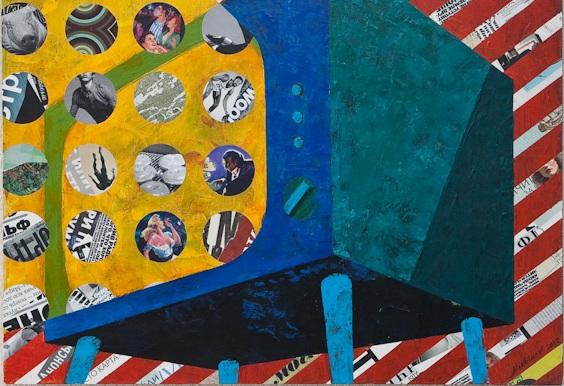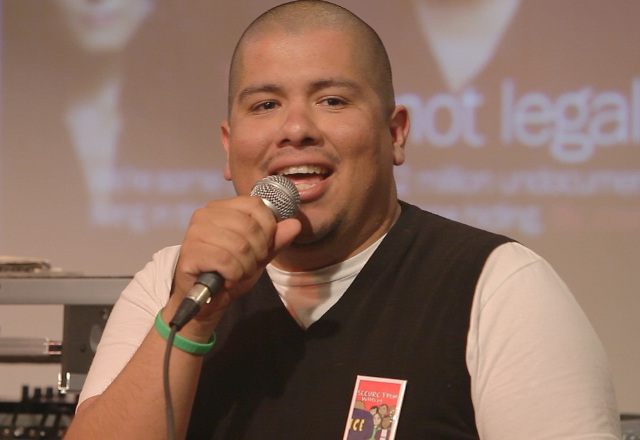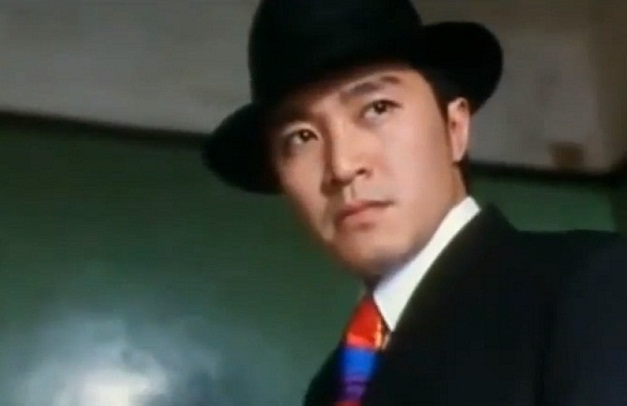The Leche author’s first novel—set in Hawaii and replete with lush pop-cultural references—can be read as a postmodern YA gem.

July 30, 2012
The young adult novel is under attack in R. Zamora Linmark’s 1995 novel Rolling the R’s. Miles away from singular narrators, linear tales, and middle-class white characters, an ocean away from the Continental United States, Linmark’s text explodes the formal and thematic expectations of young adult literature, pushing the boundaries of the genre with a dizzying array of stylistic choices: essays, short stories, poems, and even middle school vocabulary texts and book reports. Fragmented, experimental, and postmodern, the text becomes a liberating space for Linmark’s characters, fifth graders who come up and come of age in the Kalihi community of Honolulu, Hawaii.
The year is 1979, and these are not the ordinary middle schoolers of young adult fiction. While tropes of belonging and fitting in are universal to young adult literature, Linmark contends with additional complications of race and ethnicity, class and nationality. Characters including Edgar, his best friend Vincente, poet Florante, and fellow Farrah Fawcett Fan Katrina, immerse themselves in American popular culture to negotiate the relationship between Hawaiians and the continental United States, their emerging sexuality, and the liminal space occupied by first-generation Hawaiians and Filipino immigrants.
Edgar and his friends are beset by the demands of their families and community. At school, they are forced to take assimilation classes that serve up lessons in civics, United States history, and elocution (the taught directive is not to “roll the r’s”). At home, they face parents ill-equipped to address teen sexuality or the cultural alienation they experience as first-generation children. These forces impinge on their lives as they learn more about their own needs and desires. Edgar desires acceptance from his family despite being openly gay; Katrina struggles to understand her own sexuality while her mother begins an affair with her teacher’s husband; and Vincente finds himself curious about and repulsed by Edgar’s sexual experiences with the school janitor. Each of these characters narrates a different chapter, through which we learn that they are queer, questioning, and transgendered adolescents, pioneering categories of identity in search of a territory to claim for their own.
The details that emerge from these fragmented stories are often graphic, memories of domestic violence and molestation that appear in the unprocessed thought-streams of children—a father who beats his son for fantasizing about Scott Baio or a janitor who preys on boys. The young characters lack the perspective to process their experiences—Edgar, penning a fan letter to radio personality Casey Kasem, admits, “You know, I one virgin when come for findin’ the right words for explain that what I do and how I feel are not the same.” Consequently, it is we, the readers, who are tasked with witnessing their traumas, piecing together their desires, and honoring their struggles at the intersections of ethnicity, nationhood, and sexuality.
Language repeatedly demands attention in the text. The characters speak Pidgin English, a source of consternation for their teachers who include “No Pidgin English” in the instructions of each class assignment. Though Edgar and Katrina begin the assignments by observing these instructions, they defiantly code-switch as they draft vocabulary sentences and write essays. (In a book report on Judy Blume’s Forever, Katrina writes, “So everytime we go all the way, he always bring his box of rubbers cuz he no like me get pregnant too young too soon.”) Embracing Pidgin English is a small form of rebellion—it’s not the language of their colonizer but one that feels like their own.
A reader unfamiliar with Pidgin English, alienated by a language that is not his or her own, can momentarily experience the problems of linguistic and cultural translation experienced by Linmark’s characters. Their alienation is two-fold as first-generation Hawaiians and as Americans living outside the Continental United States.
Yet, American popular culture appears to be a language that all can speak: fantasizing about Scott Baio is a task that does not require “proper” English, heterosexuality, or an unhyphenated American identity; writing letters to Casey Kasem is not the practice of a single culture; reenactments of Charlie’s Angels episodes can flow just as well in Pidgin English; and dancing to Donna Summer simply requires a little bit of groove. When it seems the rest of the world is hell-bent on changing who they are, these characters discover the radical potential of American pop culture and claim it as their own.



